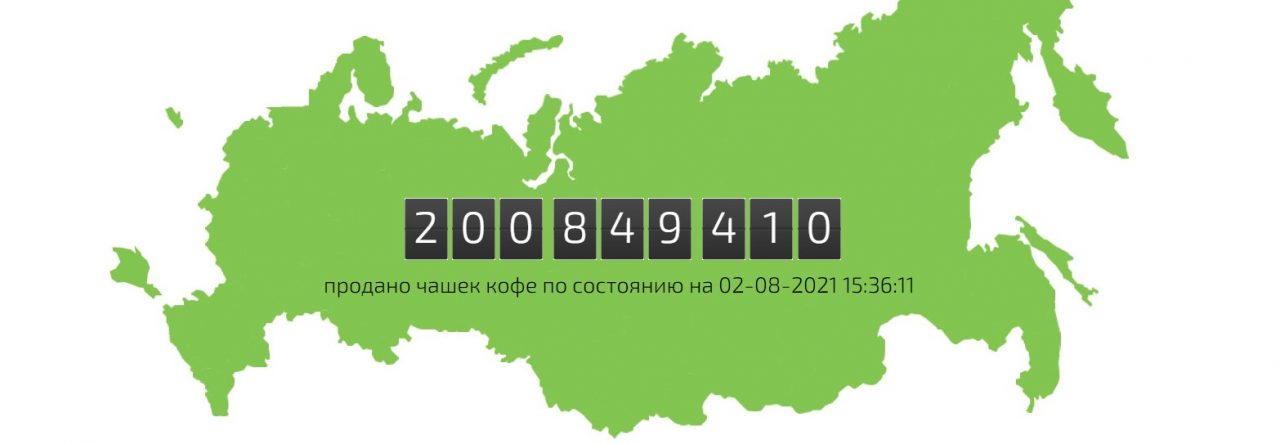Let’s talk about the habit of drinking coffee outside the home in Europe, Canada and Russia. Drinking coffee at the gas station, taking a cup of coffee to go on the way to work are the new habits of the modern metropolises inhabitants which change the coffe-drinking traditions in different countries around the world.
Mornings in the establishments of the Canadian coffee chain in any city of Maple Leaf Country starts in the exact same way. The crowd of visitors sweeps stocks of coffee and pastries in the blink of an eye – the nation is one of the most coffee-addicted in the world, which is confirmed by the impressive figures of consumption and the degree of prevalence of drink among absolutely all categories of citizens in terms of monthly income, place of residence, occupation, etc. .
In 2015, the country has topped the list of 80 countries in terms of coffee consumption, calculated in liters per capita that are bought and cinsumed in catering establishments – mostly in the cafes. In terms of absolute consumption, including the volumes of coffee beverages drunk at home, Canada is the third in the world with 152 liters per person each year. Ahead are only Netherlands and Finland coffee fiends, confirms the authoritative Euromonitor study.
Italy didn’t make it even to the top-10, which the experts were quick to explain by the continuing decline in economic activity in the country, leading to a decrease in the level of cafes traffic and locat tradition of drinking coffee at home in the Apennine peninsula. And let’s not forget about the overall culture of coffee consumption. 99% of the Italians are espresso consumers, so measured by liters they will never win the title from North Americans who are drinking the coffee by buckets, even in the heyday of italian economy. Let’s be honest to ourselves and to the readers (and even to Americans and Canadians) – for most of North Americans coffee does not play the role of a self-sufficient coffee beverage, they use it to accompany a burger or a cheesecake. As for the Finns and Netherlanders – they also like filter coffee, which by implication means large portions by volume. But still, ratings are having it their own way. Let’s move on.
Tim Hortons – Canadian “coffee pillars”
What makes Canada the absolute leader in the consumption of coffee in the format of visiting cafes, restaurants, gas stations and other places “outside “? Firstly, of course, the long cold winter (just like here in Russia!). Correlation is certainly there – it is also possible to drink hot coffee in the heat, of course, but this is «not for everyone» kind of pleasure, whereas a warm cup (or a large glass) on the way to work does the trick for almost everybody!
Morning coffee consumption scenario is realized on a cold day by every orher Canadian. Paradoxically, in the neighboring United States, in many states where the climate is almost 1 to 1 like in Canada, they drank only like 9th rating’s position volumes – no doubt due to the influence of a large number of large and populated warm southern states. Also you can easily distinguish a Canadian person from an American one by the drinks they order for their breakfast – in most cases the Canadians will take the coffee, while the American most likely will pick some soda.
But the climate is not the only component of the impact on Canadians’ preferences. And here we come to the long-awaited “secondly”.
Secondly, it is the presence of a huge, all-encompassing quality supply of coffee across the whole country. Tim Hortons coffee shops can be found absolutely everywhere in Canada, and business processes in the chain are set so that the same level of quality could be found in the most remote parts of Manitoba, in the capital – Ottawa – and in other major cities.
Canada leads the world not only by the number of indoor hockey rinks per 1000 inhabitants, the ratio of Tim Hortons cafes per person is also impressive – 3692 locations in the country give the ratio of one cafe per 9000 Canadians (the same figure for McDonald’s Canada – 1 per 25,000). This is the highest level of “coverage” of the target audience in the performance for a chain of cafes in the world.
So it wasn’t much of surprise that answering the question, why do you drink coffee at Tim Hortons, many have responded: “We are programmed like this, it is simply in our blood.”
It is hard to disagree, especially if you were able to track Canada’s progress in this regard in recent years – in 2013 the country got only fourth place in the very same rating, was the third in 2014, and, as it has been said, became first in the category “outside coffee consumption” in 2015.
A «capsule attack» or a «vending surrender»?
Overall progress in terms of aggregate consumption, by the way, is linked to the growing popularity of the segment of coffee capsules, which make the process of quality coffee brewing at home even easier. This applies not only to Canada, where, so far, this trend is still very far from being able to seriously threaten the more traditional ways of brewing coffee across the country.
Yes, capsules cost more and are less environmentally friendly in terms of packaging than the traditional coffee, but sales of this format become a factor of market development, which is hard to ignore. The trend is already being called “George Clooney effect”, refering to the Hollywood star becaming the face of the promotional company for Nespresso capsules. In the segment also actively operate such brands as Tassimo and Dolce Gusto, as well as a huge number of lesser-known players. In the UK, for example, capsules seriously threaten the positions of coffee beans and finished blends with the growth in sales of 29.5% over the last year. The total volume of sales in retail – ?137.5 million which is more than 17% of the total coffee market of the United Kingdom. During the same year, the coffee sales in more traditional formats grew by only 2.5% to ?167 million. It is not even “following on the heels of ” but “being neck-and-neck”.
Starbucks was first paid the attention to the trend and very soon starts at the local market its capsules in the most popular retail chain Tesco branded as Signature Espresso offering three variations of taste – Kenyan, Guatemalan and Columbian.
Smaller brands do not lag behind, betting on capsules loaded with high-quality blends of the best beans and premium roasting. Mutual benefit – Tesco is now the only major chain in the country which does not have Nespresso format capsules of its own private label brand, Starbucks has its own capsule coffee machine Verismo, which, however, has not yet been enjoying much of success.
Already 17% of Britons brew coffee at home using a capsule machine (in the vast majority it is Nespresso, Tassimo or Dolce Gusto), another 19% are ready to make a purchase of such a device when an opportunity will offer itself. At the same time, the price of the coffee capsules is not so low to speak of it as a factor of choice in favor of this technology. On the average, in the British retail a “capsule” cup of coffee costs 31 pence. In comparison, for example, with soluble coffee, it’s t cosmically expensive – a cup of instant-mix costs about 2 pence. Classic “grain” in this regard is the “golden mean”, as in the classical scheme of brewing by Superautomatic espresso machine in a coffee shop it’s about half the price of the capsules. Of course, I’m talking about the cost of the drink, rather than its “shelf” price.
Therefore, the choice of catering leaders clearly leans in favor of grain coffee machines. With the current price of capsules their place is in the home devices, which the request for the coffee does not exceed 10-12 coffee cups a day.
Canada is evolving in this direction, home coffee consumption is growing, even though it’s happening not as fast as in the cafe. Plus 3% over the past few years. It’s not so bad, and capsules play a significant role here, at least taking consumers who previously brewed using drip coffee machines.
Moreover, in Canada they first began supplying the capsules in a fully biodegradable shells – thanks to the Loblaw company. That trend will be picked up by the rest soon, and then it is expected that environmentally conscious citizens (millenials mostly) will become a highly influential market factor. (Their share in total consumption is growing rapidly by 5% to 6% per year).
They also will be stimulated by the latest results of research on potential harm/benefits to the health – the beverage was acquitted of carcinogenicity at the level of World Health Organization. Moreover, drinking up to 4 cups a day significantly reduces the risk of many types of cancer (provided that you do not drink your coffee at the temperature of the Sun’s surface).
This is where things get really interesting. Tim Hortons had previously announced coming to the UK market, but so far outside the US northern states and Canada the chain can not boast any global success, though it is in the Middle East, but there is a specificity – cafes operate at military bases, diplomatic missions, etc. In the United Kingdom there is Costa Coffee, just make it move from its niche, as well as there’s the above-mentioned trend towards home brewing using the capsules.
The company does not give up its british invasion plans, and then we may very well see the Tim Hortons capsules, maybe even for its own capsule coffee machine (which will mean the “war” with Starbucks), or else the Canadians will compete with Costa Express and its super-intelligent vending devices Marlow (although this scenario belongs completely to the realm of fantasy). In any case, company will have to do something, and the possible ways to capture the share in the UK market aren’t that numerous.
And what is even more important, even when thinking about expansion into the UK market one should not forget about a possible counter attack which can happen at any moment: Costa Coffe actively develops in Canada, especially with its ambitious and revolutionary Costa Express project, which I believe is good enough in its current state for the Russian market of coffee drinks sales at the gas stations. In fact, this determined my recent decision to invite Costa Express for joint business in Russia. Meanwhile the Costa Express is not in a hurry to conquer the Russian market, as well as RusHOLTS not in a hurry to try its coffee-making efficiency in the British Isles.
At the same time, studying the phenomenal success of Tim Hortons in Canada, I often think about the coffee business development projects in North America, where the gas station segment of coffee solutions is stuck at the level of 80-ies of the last century and today it is a free-market niche, which is not being taken in a speedy manner not by Starbucks, nor by Costa Express and Tim Hortons.
The threat of “capsule expansion” for the coffee business of modern gas stations is not something worth speaking – neither in Europe nor in Russia, nor in the United States and Canada. Capsule coffee making technology has been and remains the lot of domestic consumption market. «Outside the home» coffee market remains the domain of professional coffee equipment, coffee beans for automatic coffee machines and natural milk, i.e. it belongs to the model, used by almost all the fast-food market leaders.


Leave a Reply